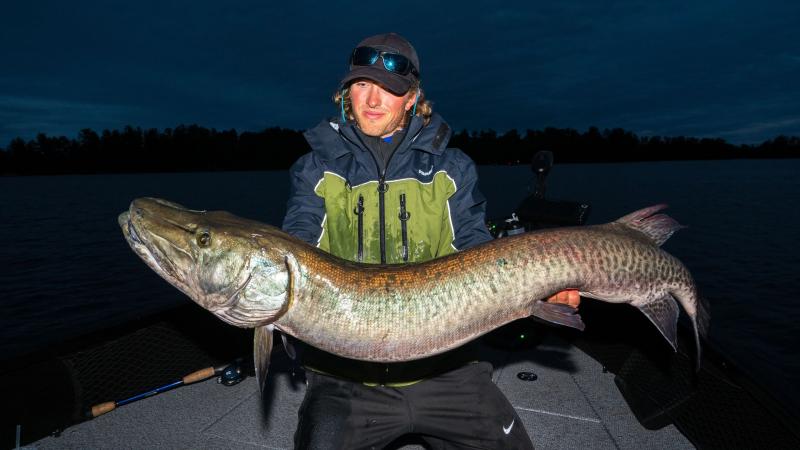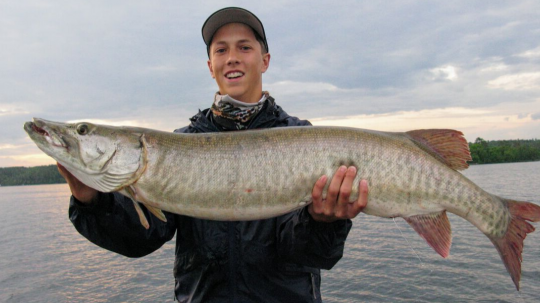
Muskie Fishing
There is no body of water in Minnesota that strikes a balance between being a diverse fishery, scenery, and being as accommodating as Lake Vermilion. The big V has long been touted as being well managed, filled with narrows, current, islands, and more structure than one can imagine for fish to hide; a pressured fishery that still has much to be discovered is a rarity in this age and Vermillion has it. Optimism for 2020 is high as the 2019 angling season boasted plenty of large walleyes, world class muskies, and enough bass, pike, and panfish to always keep the rod bending and smiles beaming.
From a fishery standpoint, many waters in Minnesota have a very cyclical life, with peaks and lows in targeted species populations, however Vermilion remains consistent year after year. Muskies of monstrous sized proportions are commonly found lurking the waters. An excellent forage base of ciscoes and large whitefish thrive in Vermilion. These fatty fish in conjunction with boundless amounts of vegetation and rock structure adjacent to they’re deep water homes grow some of the biggest muskies found anywhere. Potential for a 50” class fish exist with any cast, on any point of the lake. Whether it be one’s first or ten thousandth cast, seeing a specimen of this caliber, on body of water like Vermilion, is a memory that will last a lifetime.
In the early season musky fisherman find success working the lakes shallow coves, bays, and gradual sloping shorelines. These fast warming waters are the first areas muskies in recovery from spawn go to fire they’re metabolism back up. One should look for warmer water or early cabbage growth. Casting smaller lures such as bucktails in the double and triple bladed variety are common practice. Small crankbaits and glide baits such as phantoms and suicks can also yield good results.
As midsummer rolls around many muskies will be found transitioning into open water to feed on whitefish and ciscoes feeding on hex larvae in the upper sections of the water column. Finding these large expanses of bait and trolling large crank baits is a popular method of take during this time.
Once the water temperature begins to reach its peak in mid July, fish will transition onto deeper rock structure, reefs, islands, and isolated cabbage beds where they can be found for a good remainder of the season. Secondary and primary structure can each yield good results. At this point in the season many fish have seen baits so utilizing a run and gun approach is best focusing on windblown areas, and specific basins given the conditions. Many anglers will upsize lures at this time, casting a variety of large rubber baits such as bulldawgs, triple bladed lures, and an assortment of large topwater baits. Educated fish can be tempted by consistently varying one’s retrieve speed, fishing prime feeding windows, and paying close attention to the moon phase its set, and rise. Night time fishing near the full moon periods can prove to be a very productive approach.
With few invasives, continued input and monitoring of the lake by the DNR, fishing guides, and lake associations alike, Vermilion will remain an angling paradise and escape for many years to come. The mystique and secrets the glacial carved shorelines of Vermilion hold will keep not only an angler but anyone who spends a day on the water, hooked on the lake for a lifetime.
Tight lines,
Jarek
1 (715) 892-7048
https://rodsbent.com/

